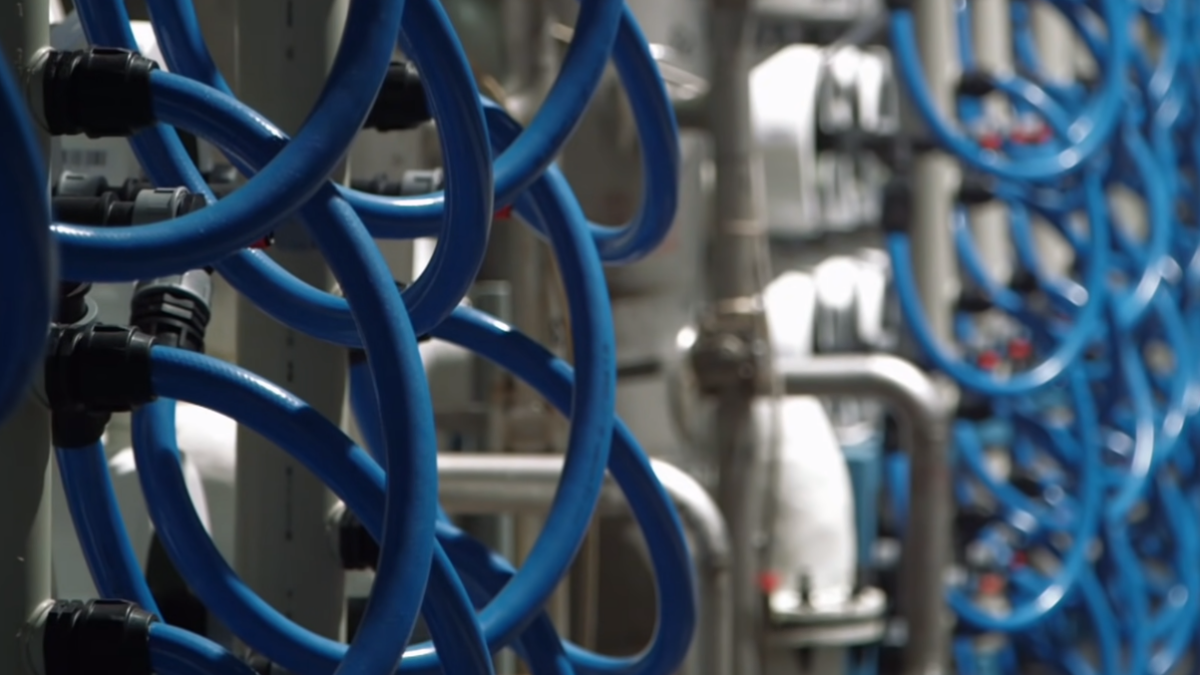California has two desalination plants coming up for a vote by the state Coastal Commission this fall which will decide the projects’ fate as the West Coast suffers its worst drought in 1,200 years.
In May, the commission unanimously rejected a $1.4 billion-dollar plant that would have offered 50 million gallons of precious potable water daily to a region which, by nature’s standards, should not even exist as the metropolis it is today.
State regulators raised concerns over risks to marine ecosystems and “environmental justice” as reasons to vote down the massive water project in their report.
Environmental hazards, however, could be diminished by proper mitigation strategies including some that could turn plant waste products into lucrative commodities.
A Salty Solution
The Israel Salt Company, for example, has struck a deal with the Mekorot desalination plant in the southern port city of Eilat to make high-quality table salt from the leftover sodium.
“A brine discharge line and other discharge facilities are not needed,” wrote a pair of researchers in 2007, adding “non-homogenous salinity distribution profile of the sea is prevented, leaving the sea fauna and flora at this beautiful resort city untouched.”
Ten years later, a study from the Australian government found in the absence of such an arrangement, excess salt runoff can be carefully dropped into the open ocean without significant changes in the ocean’s salinity.
“The influence of discharge for desalination plant can be neglected in terms of any environmental impact to the aquatic flora and fauna species,” researchers reported. “Some of the sampling evidences for some fish species indicate that these fish are not very sensitive to the salinity fluctuation.”
In other words, when released properly, leftover sodium will have minimal impact, if any, on local marine habitats, concerns about which were a primary reason the California Coastal Commission denied L.A. residents under drought restrictions since June access to abundant water.
Innovation in desalination technology has also opened the door to turning plant byproducts into other saleable assets.
Clean Chemicals
According to researchers at the Massachusetts Institute of Technology (MIT), concentrated desalination brine can be converted into chemicals with market value.
In a 2019 report, a team of scientists outlined how direct electrosynthesis of desalination waste can produce sodium hydroxide and hydrochloric acid, both of which are also useful ingredients in plant operations themselves.
Sodium hydroxide, also known as “caustic soda,” can be used to pretreat incoming seawater and lower its acidity, allowing membrane filters to last longer. Plants creating their own sodium hydroxide would no longer need to purchase the chemical from a third-party seller when the product can be made onsite. In fact, plants could make so much of it that excess products could be sold on the open market as another stream of revenue.
Hydrochloric acid from recycled brine discharge can also be used as a cleaning chemical inside the plant, or can be exploited to produce hydrogen. Hydrogen is an emissions-free fuel, the only byproduct of which is water when consumed in a fuel cell to generate electricity.
Both hydrochloric acid and hydrogen are lucrative byproducts that could be sold off by plant operators in addition to excess sodium hydroxide.
Trigeneration: One System To Produce Water, Electricity, And Hydrogen
A 2018 paper from a trio of scientists from the Memorial University of Newfoundland and the University of Ontario outlined how desalination plants may be configured to produce freshwater and hydrogen when exploiting “waste heat” from other sources. While researchers used a glass-melting furnace as an example of a heat source in their paper, nuclear power plants also produce substantial “waste heat” with the potential to be integrated with desalination processes.
In other words, one system can be configured to produce abundant freshwater, electricity, and hydrogen all without releasing emissions.
Moreover, while the Democrats’ latest colossal spending package dubiously named the “Inflation Reduction Act” heavily subsidizes renewable energy programs, the legislation also offers some handsome subsidies for hydrogen, which can be produced from nuclear power for as little as half the cost of wind and solar. One site that could potentially benefit from the federal subsidies is currently at risk of being shut down.
Diablo Canyon Nuclear Plant
On Sunday, California lawmakers proposed legislation to keep the nuclear power plant at Diablo Canyon open as the state struggles to convert the power grid from reliance on fossil fuels to intermittent wind and solar. Legislators will vote on the proposal Wednesday.
The Diablo Canyon nuclear plant is the last one to remain open in the state of nearly 40 million forced to import about a third of its electricity from its neighbors. The bill would offer a five-year extension to the plant, which is currently scheduled to go offline by 2025. The plant remains California’s largest single source of electricity which also comes emissions-free.
Initial plans at Diablo Canyon reportedly included six reactors as opposed to just the two standing today. The extra four were meant to enable the plant to integrate operations for desalination processes, allowing Californians to capitalize on an abundant source of water in a parched region.
A joint study from Stanford and MIT researchers published last year concluded extending the lifetime of the nuclear plant to 2035 would cut state power sector carbon emissions by more than 10 percent compared to 2017, and strengthen an increasingly fragile regional power grid from rolling blackouts experienced in recent years.
Moreover, “operating Diablo Canyon as a polygeneration facility — with coordinated and varying production of electricity, desalinated water, and clean hydrogen,” they wrote, “could provide multiple services to California, including grid reliability as needed, and further increase the value of the Diablo Canyon electricity plant by nearly 50 [percent].”
Environmentalist Obstruction
California Democrat Gov. Gavin Newsom has been a late proponent of both efforts to expand state desalination operations and the campaign to keep the nuclear plant at Diablo Canyon open.
Former gubernatorial candidate and environmental author Michael Shellenberger, however, places blame for hostile conditions for state development at the governor’s feet, where Californians held hostage by radical environmentalists continually brace for routine blackouts and endless water restrictions.
“He has failed to build a single new large water project, despite the fact that California voters in 2014 passed a $2.7 billion water bond to pay for them,” Shellenberger wrote in an April Substack post.
In an interview with The Federalist, Shellenberger criticized Newsom for being captive to the environmental lobby and failing to apply meaningful pressure to state regulators for approval of the Huntington Beach desalination plant this spring.
“The governor could force it but wants the support of those groups and doesn’t want to upset [them],” Shellenberger said. “He appointed the members of the Coastal Commission. He needs to muscle them into doing it.”
Big Green environmental groups from the Sierra Club to the Natural Resource Defense Council (NRDC), Shellenberger added, are continuing to oppose desalination and nuclear while masquerading as crusaders for the planet.
“The people want it, it’s popular,” Shellenberger said of desalination. “It’s just special interests in the way.”









